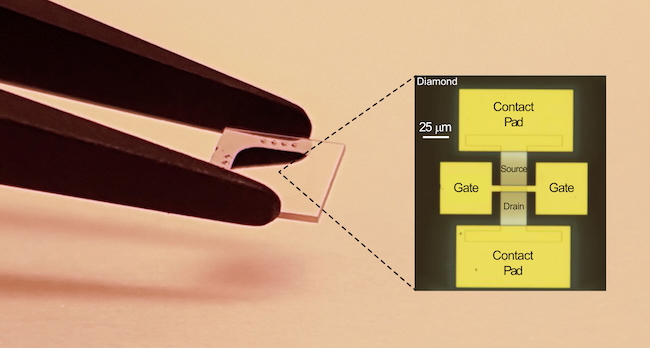
“The challenge for power electronics is that the design of the switch needs to be capable of staying firmly switched off when it’s not in use to ensure it meets safety standards, but it must also deliver very high power when turned on,” says Prof David Moran who led the research, “previous state-of the-art diamond transistors have generally been good at one at the expense of the other – switches which were good at staying off but not so good at providing current on demand, or vice-versa. What we’ve been able to do is engineer a diamond transistor which is good at both, which is a significant development.”
The researchers used surface chemistry techniques to improve the performance of diamond, coating it in hydrogen atoms followed by layers of aluminium oxide. Their diamond transistor requires six volts to switch on, more than twice the voltage compared to previous diamond transistors, while still delivering high current when activated.
They also improved how efficiently charge moves through the device, achieving twice the performance compared to traditional diamond transistors. When switched off, the device’s resistance is high enough that it measured below the noise floor of the team’s equipment in the lab meaning almost zero current leaks through when it’s supposed to be off, a crucial safety feature for high-power applications.
Their paper is at: ‘Extreme Enhancement-Mode Operation Accumulation






